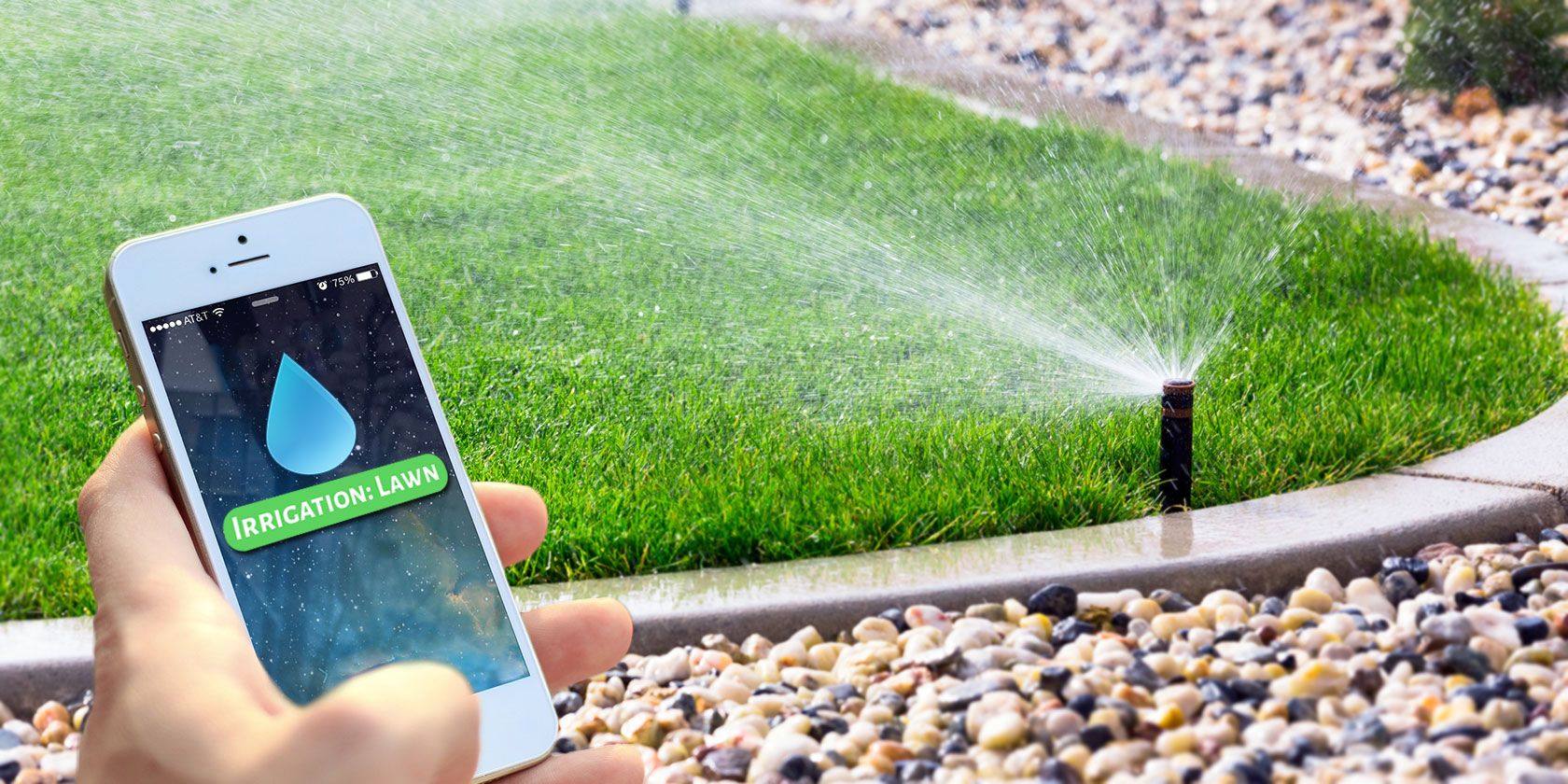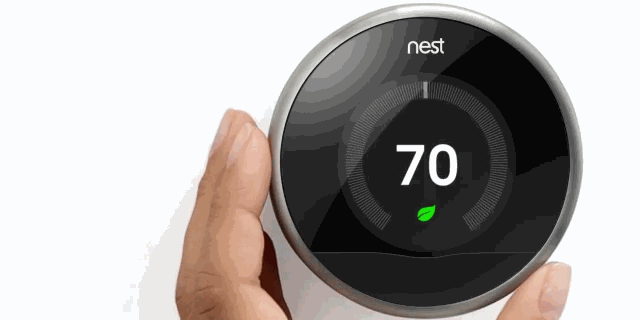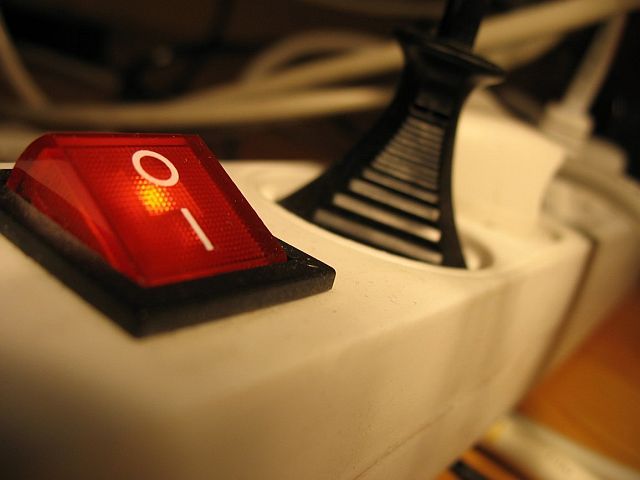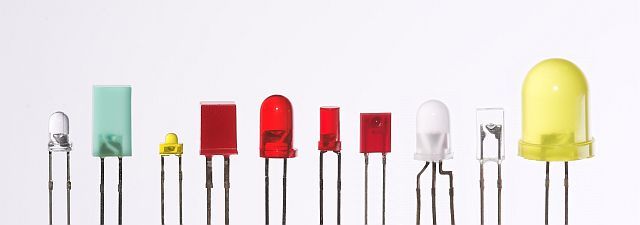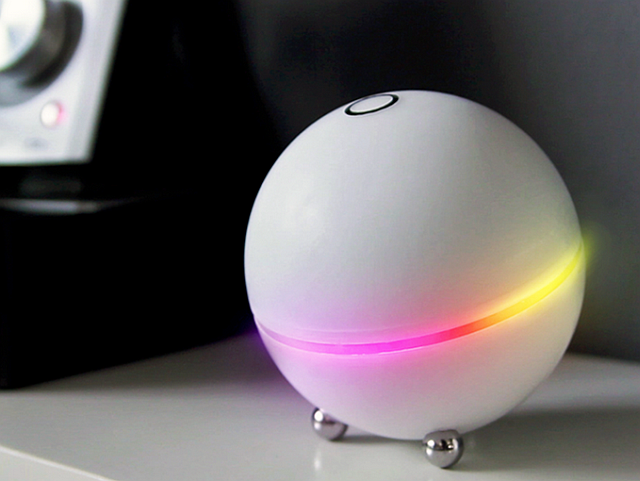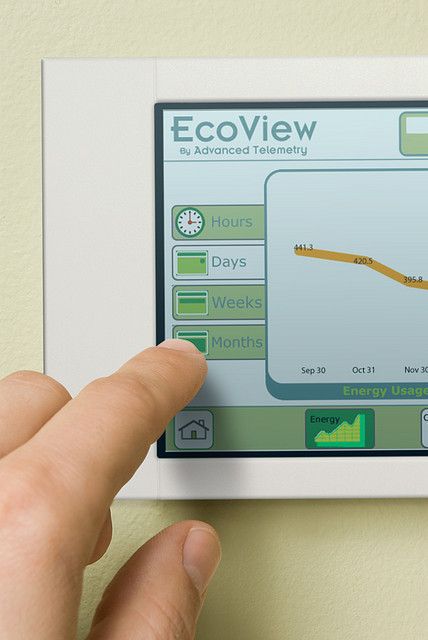Making your home smarter can only mean one thing: money in your pocket. Networking your home through a single device will enable you greater control of your local surroundings, where you can utilize a number of devices, receivers, and apps designed to make the home more efficient.
One of the biggest benefits of a smart home is the energy saving technologies available. As well as saving money, you’ll also be pushing toward a more sustainable, convenient living situation.
Let’s look at some of the best money saving devices you can bring into your smart home.
Thermostats – Nest Learning Thermostat
"Don’t touch the thermostat!" my father roared. I never did, until I was in my own digs. Thermostats are no longer a challenge for me and I realise how useful they can be when keeping the temperature in your house regulated.
There are numerous smart thermostat devices on the market already, but there is really only one clear winner. The Nest Learning Thermostat learns about your daily heating habits, quickly self-programming a schedule that matches your living patterns. It’s a rapid learning phase, too. Within a week or so the thermostat will be picking up that on Wednesday evening at 18:30 you like the temperature at a chilly 53, or on Sunday night at 20:00 you like a balmy 78 for bath time.
The key is providing the Nest with sufficient data to learn patterns. Once the Nest has a few data points to extrapolate from it can continue managing your heating, as well as your air conditioning. As it is a data driven system, you only have to begin altering the input data to encourage the Nest to change the schedule.
Nest is expanding its operations by teaming up with other successful smart home devices. Check through their Works with Nest page for availability.
Cost: $200+
Others: ecobee Smarter Wi-Fi Thermostat, Allure EverSense WiFi Smart Thermostat, LockState WiFi Programmable 3 Stage Thermostat
Power – Various
Outlining a single product for smart home power management is difficult – not because there aren’t any, but because you can combine so many of them for your ideal solution. So long as you wind up saving money, you can toy around with your smart home power solution.
Power management is about understanding peak times and optimal times for appliance usage, and changing parts of your behavior accordingly. There a number of real-time energy monitoring tools that provide feedback on your usage vs. the cost of energy at the time of use, allowing you to make adjustments as you go.
Further to this, a good power management hub should enable you to turn appliances on and off based upon optimal power times for your locale, optimizing energy use and minimizing waste. In other words, wholeheartedly saving you cash money.
Explore a combination of smart home power devices:
- Power timers and monitors
- Power strips
- Occupation and motion sensors
- Appliance switches
- Central management hubs
Central management hubs are extremely useful, especially if they further integrate with the wider smart home, or at least support third-party applications and appliances.
Lighting
Lighting falls under power, but needs its own little section. When you are installing your power management devices, consider upgrading your lights to some form of LED bulb. They are brilliantly bright, come in all manner of warm and cold colors, all shapes and sizes, and many of them are now available for use with dimmer switches (they used to struggle!), plus they last for a very long time.
It’s a small switch that can save you serious money in the long run.
Solar and Wind
Another power section. Not exclusively smart home technology, but a strategic placement of solar panels or a wind turbine can generate enough energy so you can become just a little less reliant on the grid, taking the power into your own hands. These can be quite the initial outlay, but will eventually reap a decent return in the middle-to-long run. An investment for your future, perhaps.
Home Hubs
Controlling your smart home should be one of the most enjoyable parts of the process. In the early days of home automation, you’d have a local hub for almost every device you installed. It’s much simpler now, with dedicated home hubs networking each device, communicating using the full wireless spectrum: WiFi, Bluetooth, infrared, NFC, ZigBee, Z-Wave, and many more.
Homey is a colorful, spherical hub that acts as your home assistant, controlling everything and anything. Hub developers, Athom, have assured that Homey is completely voice compatible, too, meaning you can talk gently to the hub or your phone to issue commands to your smart home. This one is due to hit shelves "around summer 2015."
Cost: $299
Revolv is currently only available in the US, but it has won many supporters in the smart home sector. In fact, it’s so well thought of that it is now part of the Nest Learning Thermostat Family. Combining the two devices in your smart home provides further unification of your devices and appliances, all managed through a single handy app.
Revolv can control smart lights, locks, cameras, monitors, and thermostats, as well as providing active geofencing for your property, meaning you can trigger your automations as you cross the threshold to your property, or switch them off as you leave.
Cost: Likely to change as part of Nest Family. Was around $300.
The Wink hub is another versatile smart home hub. What sets it apart from other smart home hubs is the massive range of associated products that’ll work out-of-the-box. This includes all manner of lighting, dimmers, switches, outlets, controllers, sensors, detectors, monitors, locks, gauges, window blinds, and irrigation controllers.
The hub was designed with functionality and efficiency in mind, and it certainly looks to deliver these over a wide smart home device spectrum.
Cost: Starting from $100
Gardening – GreenIQ Smart Hub
Smart Homes extend to the garden, too. Installing a smart irrigation system will save you time and money, giving you scope to enjoy the fruits of your labor.
The GreenIQ Smart Hub can be controlled through WiFi, through a massive range of devices, and can control your watering schedule, sprinklers, and outdoor lighting through a couple of buttons. It can actively respond to changing weather conditions in your local area over a period of time, monitoring the nearest weather station and responding accordingly.
Using an intelligent hub to monitor your watering habits can help to save up to 50% on your gardening water bill, while keeping your outdoor space looking pristine.
Cost: $200+
Others: Rachio Iro 8 Zone Smart Irrigation Controller, IrrigationCaddy IC-W1 Irrigation Controller.
Roundup
This is by no means an exhaustive smart home device list, but should enable you to get your smart home up and running. You don’t have to go out and splurge on all the gizmos at once – that would be somewhat costly – but I would advise setting out a clear strategy to your home smartification.
You should also check out these 6 Eco-Friendly Apps - they are an excellent step toward monitoring your carbon footprint, can be used alongside your smart home, and grant you great insight into wasteful energy habits.
Assess your household energy costs. Evaluate the most cost effective devices to bring in. Install. Reap the rewards!
Is yours a smart home? What’s your favorite smart device? Let us know below!
Image Credits: sprinklers watering grass Via Shutterstock, Power Strip via Wikimedia Commons, LEDs via Wikimedia Commons, Homey via Kickstarter, EcoView via Flick user Advanced Telemetry

